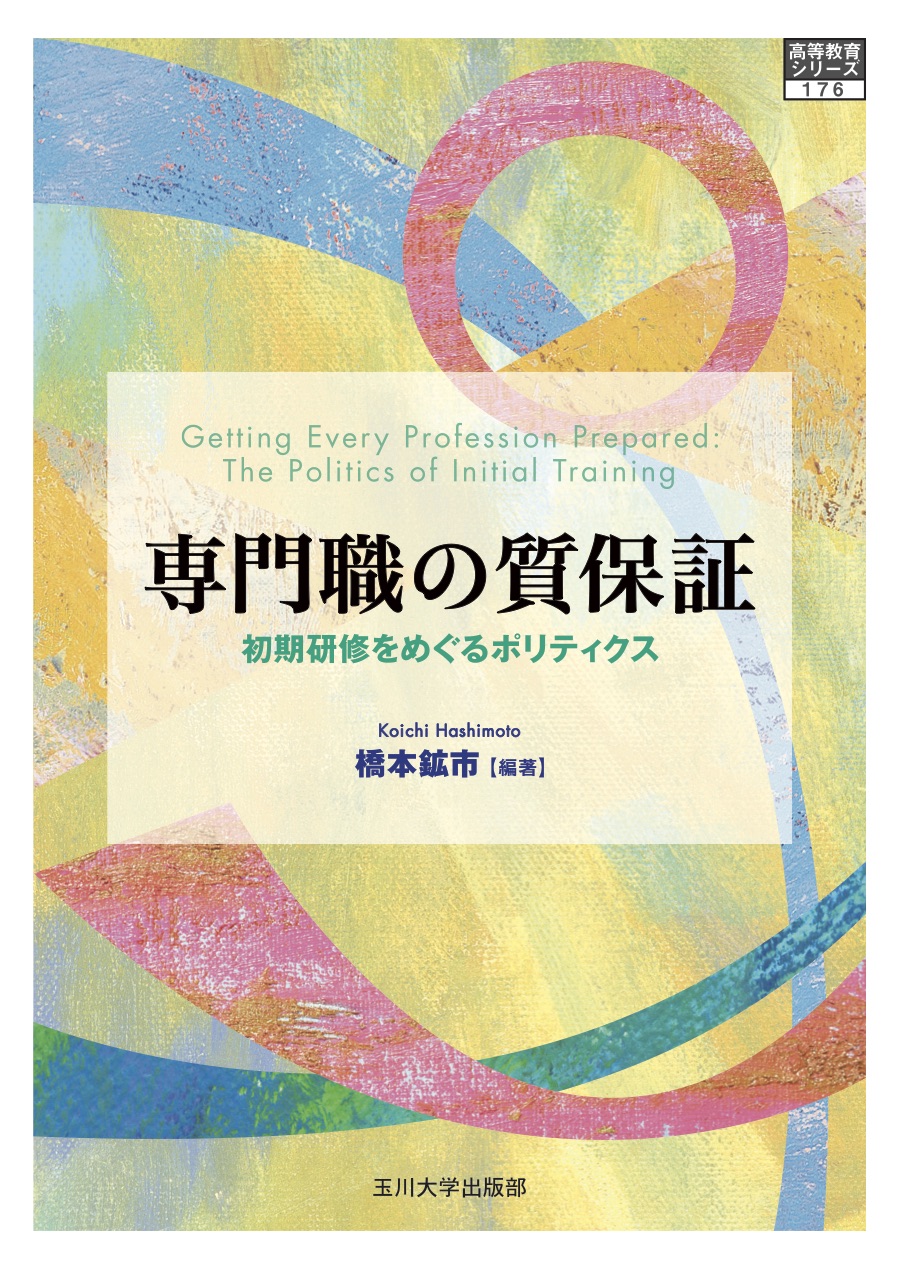
Title
Higher Education Series 176 Senmonshoku no Shitsu Hosho (Quality Assurance of Professions - Politics Around Initial Training)
Size
336 pages, A5 format
Language
Japanese
Released
September 25, 2019
ISBN
9784472405860
Published by
TAMAGAWA University Press
Book Info
See Book Availability at Library
Japanese Page
This text is the third volume following the 2009 and 2015 volumes on professional training compiled by Hashimoto. Previous writings had assumed a country-university-market professional training regime and focused on the characteristics of logic and the political dimensions operating within it. Continuing with the issues at hand so far, this book takes up the “initial training” of professions and historically analyzes how “quality” assurance has become (or is becoming) more institutionalized.
Generally speaking, modern professional training supposes a series of processes: entrance examinations to higher education institutions-professional training-state examinations-initial training-lifelong learning opportunities. Various forms of professional “quality assurance” mechanisms are put in place at each stage, but it is initial training that is of deep interest today. Initial training serves as a bridge between higher education and professional work in the field; in other words, it organically links the “theoretical knowledge (academic knowledge)” of the educational institution to “practical knowledge (field knowledge)” of the work in the field. In recent years, there has been a growing concern among people that the discrepancy between higher education and work in the field is widening and causing dysfunction.
This is exactly why this book focuses on the subject. Initial training is the nexus between education and the field; therefore, policies and debates on the nature of initial training will shed light on the connections between the intentions and predictions of groups of actors involved in professional training, and also on how the elusive “quality” is defined and constructed.
Therefore, in addition to the traditional professions (such as doctors, lawyers, and teachers) that previous books have dealt with, this book widens the scope to cover eight occupations, including nurses, registered dietitians, mental health professionals, childcare workers, and social workers. For these types of professions, this text carefully examines what kind of discourse has been developed by the actors involved in training, clarifies the logic and strategy of each position, and deepens the understanding of quality assurance for the professions in general regarding the teleology, duration, place of implementation of initial training, and its institutionalization.
As described above, this book uses the initial training system as a window to provide a cross-sectional overview of the discussion on “quality” assurance. Readers who want to deepen their understanding not only of a specific occupation but of all professional occupations will find this book useful.
[References]
Hashimoto, Koichi (ed.) 2009, The Japanese-Style Structure of Professional Training, Tamagawa University Press.
Hashimoto, Koichi (ed.) 2015, Professionals’ Compensation and Occupational Domain, Tamagawa University Press
(Written by HASHIMOTO Koichi, Professor, Graduate School of Education / 2020)



 Find a book
Find a book


